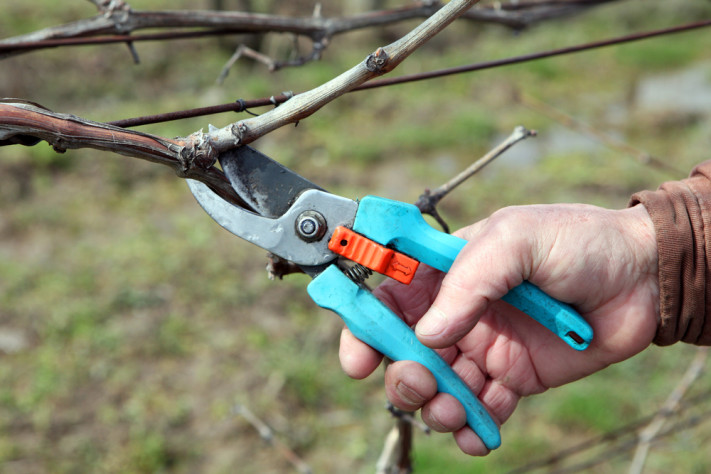
08 Feb A Winter Story
In the Cellar and in the Vineyard
With the crucial 20-hour days that come with the harvest, most winemakers are happy to welcome the quiet of winter in the cellar. Though the workload declines, winter calm doesn’t mean an end to critical tasks in the cellar and in the vineyard.
While we believe firstly, that great wine begins in the vineyard; most winemakers would agree that attention to detail is second in importance. The story is in the detail-oriented tasks that dominate the winter season for winemakers and cellar hands. This is the time when small changes are closely monitored, and older wines are maintained to continue aging to it’s graceful journey into the bottle. One of the most important tasks is “topping off”. This entails filling the barrel with added wine to ensure that it stays full to the top, from one season to the next. Oak allows for small amounts of evaporation through the barrel staves; allowing a tiny amount of air into the barrel. This oxygen exchange is responsible for some of the unique flavors found in wine, like vanilla and baking spices, or smoky notes. Monitoring this balance of oxygen exchange, makes the difference of a wine showing oak-influenced complexities versus a wine that is thin with off-vinegar taste.
The winter story of life in the vineyard is a period of important activity. The vines are placing their energy sending out new roots; storing food needed to survive during cold temperatures from November to March. In sustainable and organic vineyards, the use of a cover crop is very important. The growth of native grasses helps cut down soil erosion with their tiny root system holding soils together and providing additional oxygen to the soils. Composting can also be critical to improving much needed soil nutrients.
Pruning is the main activity in winter and lays a foundation for the entire growing season. Depending on grape varietal and pruning style, the grower will select the amount of buds to keep; helping determine potential yields for the season. Hand-pruning yields the best results and allows for individual attention to each vine, focusing on the end result of high quality fruit over quantity. With mechanical pruning on the rise, we feel it’s important to align ourselves with growing partners who share our philosophy of healthy, sustainable practices that result in premium quality fruit.